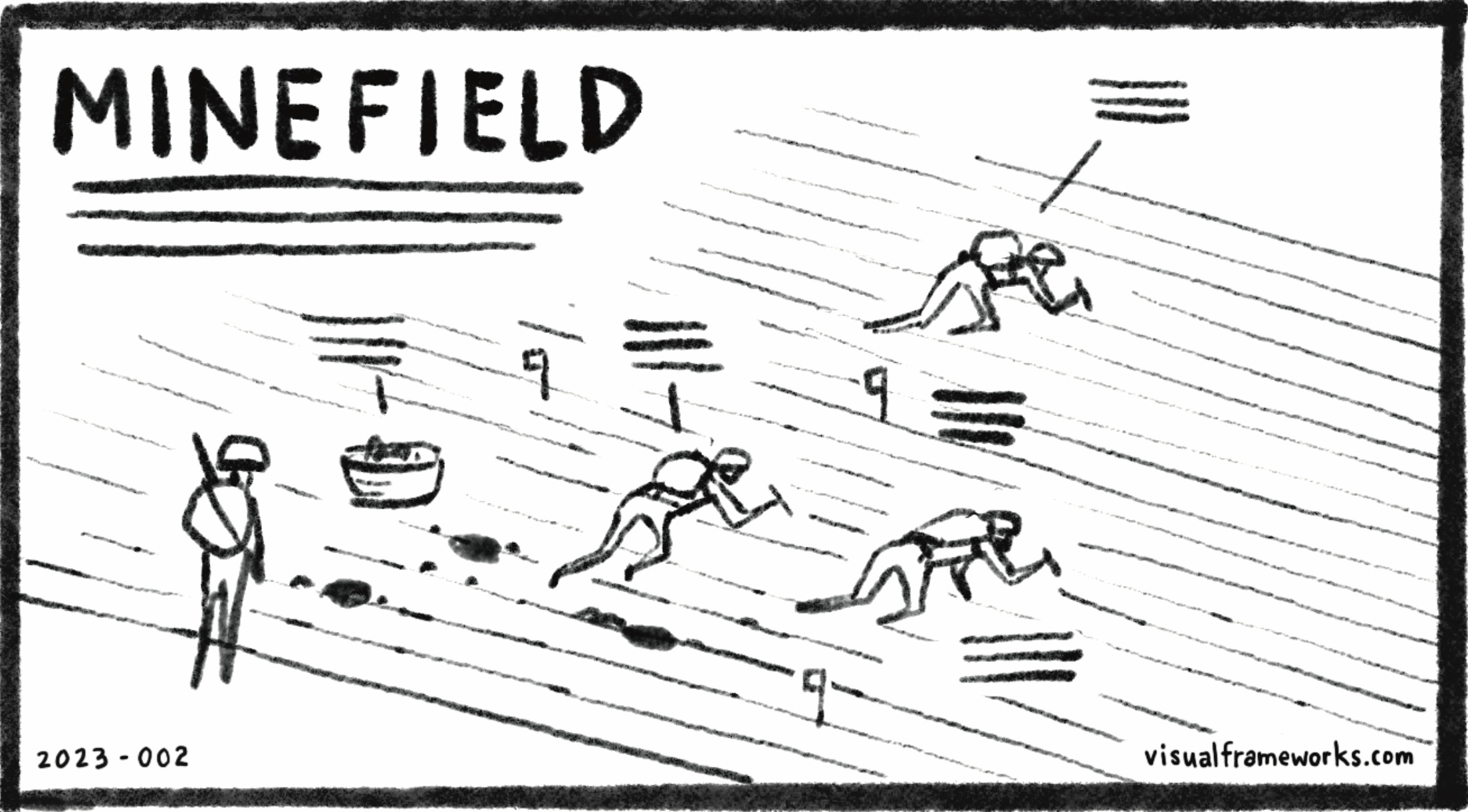In wartime, minefields are sown to make terrain difficult for the enemy to navigate. If you’re caught in a minefield, you no longer know where to take your next step. At the least, a minefield will slow you down. It will expose you, making you vulnerable to enemy fire. And at the worst, it will get you blown up. Even long after the war is over, minefields may remain, creating hidden hazards for anyone who might happen by.
Some situations are like minefields, fraught with hidden dangers. In such cases it’s important to proceed carefully, because things could easily go wrong, very fast.
Three things will increase your chances of surviving a minefield. First, pay close attention to your surroundings; remain vigilant and alert, highly focused on the present moment. Second, do your best to detect the mines. Close observation can help you see them before they go off. Third, keep calm. Move slowly and deliberately until you have reached a safe zone. Be sure to mark mines as you find them and flag the area as a warning for others, or for yourself if you happen to cross the same path in the future.
Are you caught in a minefield? How can you bring yourself into the moment, to be as attentive as possible? Observe the situation closely. Can you learn how to detect the mines before they explode? What can help you keep your cool? How can you clear a path, and create markers to make the space safer in the future, for yourself and others?
See also: Iceberg, Subduction, Layer cake, Conflict
2023-002
The idea for this visual framework came from Alex Osterwalder.
